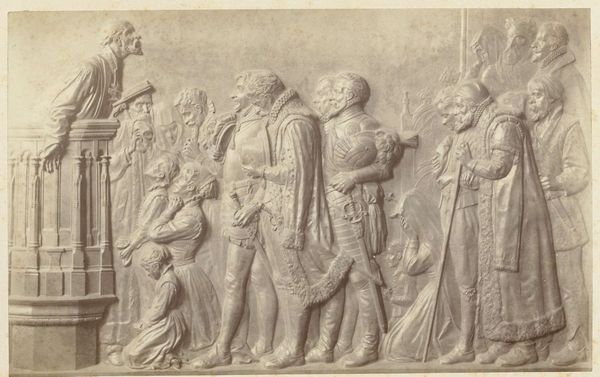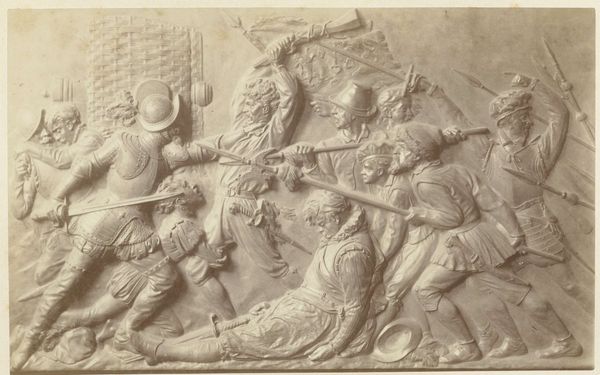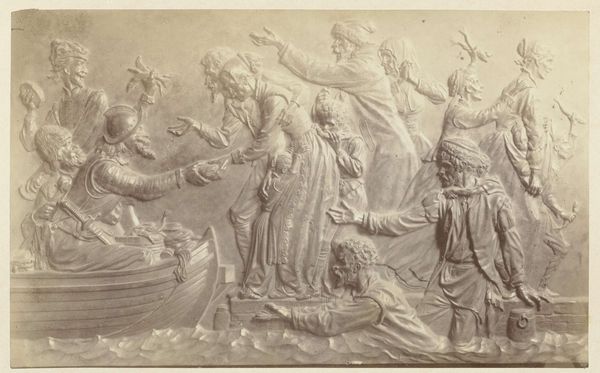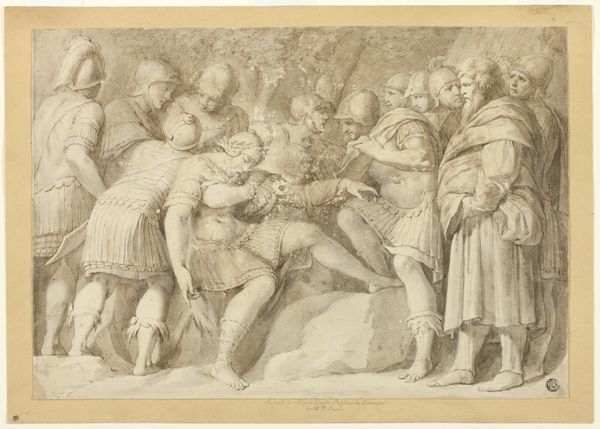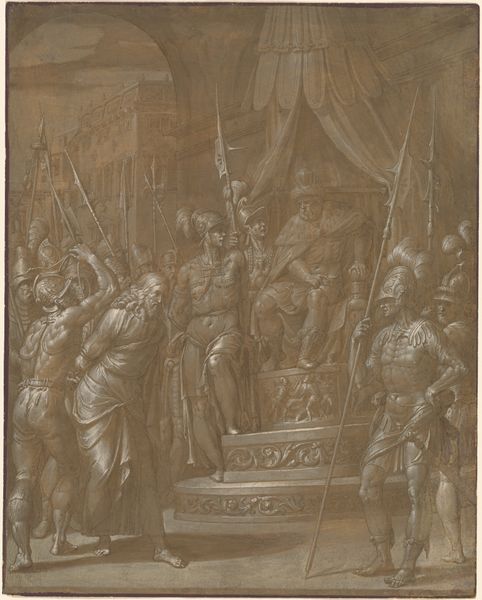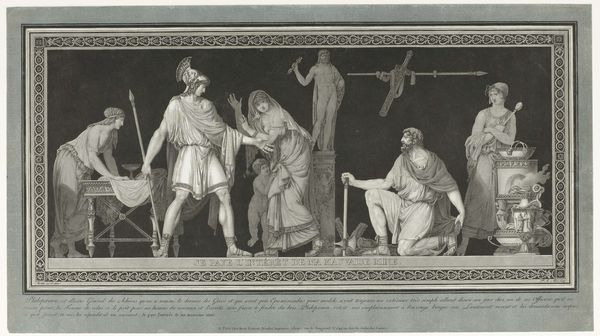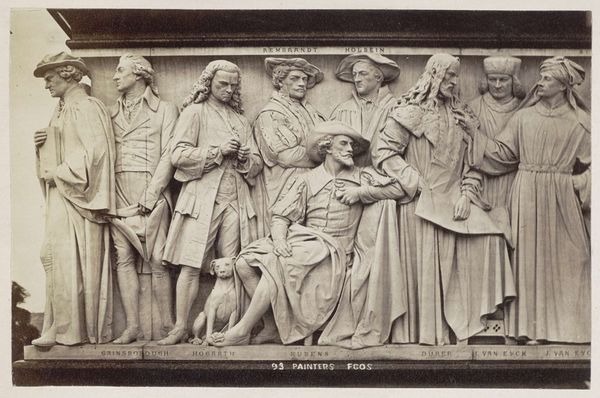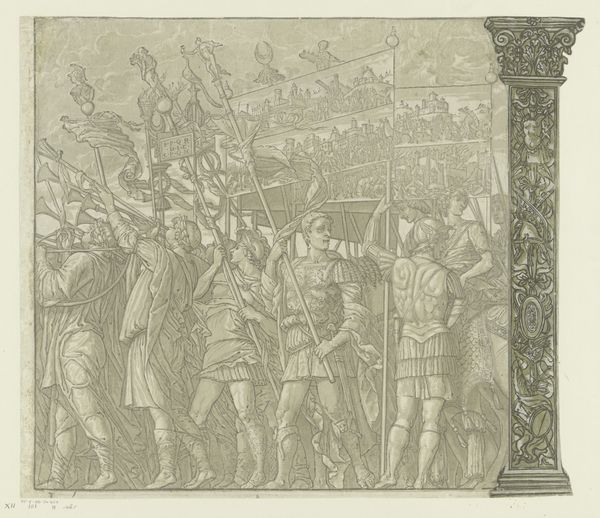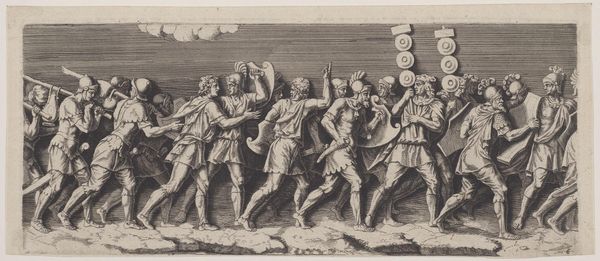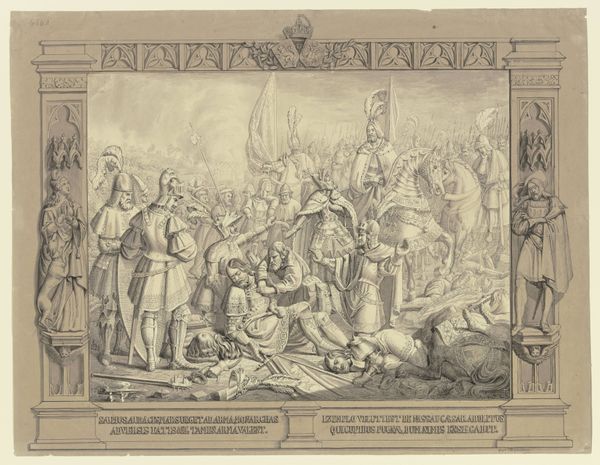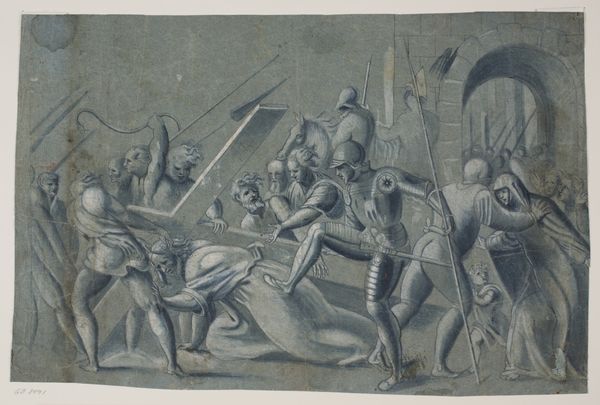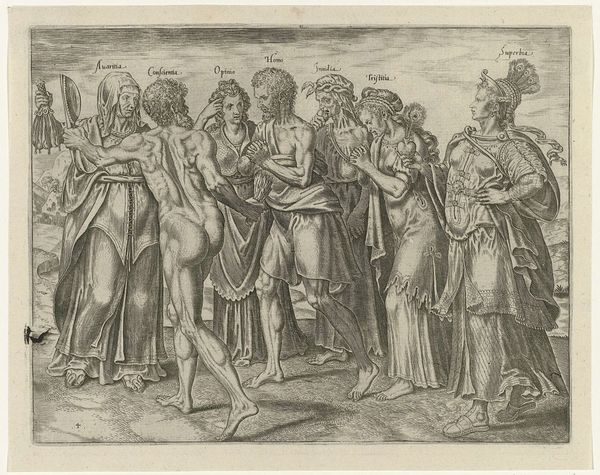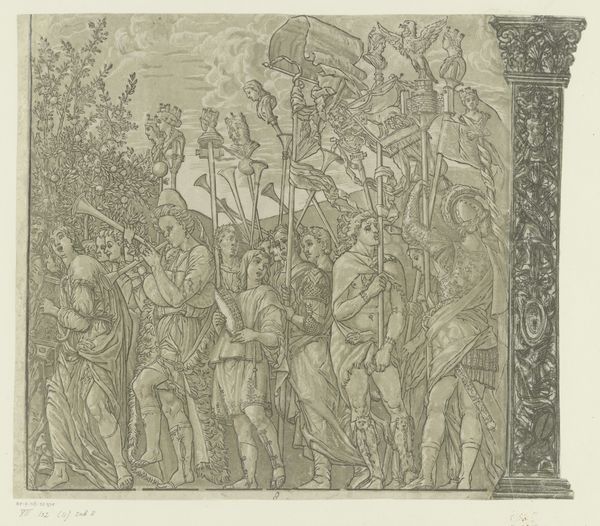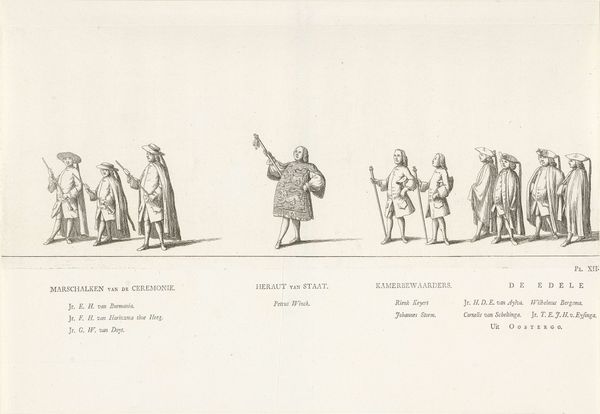![Reliëf met scène uit de Tachtigjarige Oorlog [?] by Willem Frederik Vinkenbos](/_next/image?url=https%3A%2F%2Fd2w8kbdekdi1gv.cloudfront.net%2FeyJidWNrZXQiOiAiYXJ0ZXJhLWltYWdlcy1idWNrZXQiLCAia2V5IjogImFydHdvcmtzL2U4OTNmMmU0LTlhYmYtNDVhYy04NWE4LWMxMmI3ZDdhYWYxZi9lODkzZjJlNC05YWJmLTQ1YWMtODVhOC1jMTJiN2Q3YWFmMWZfZnVsbC5qcGciLCAiZWRpdHMiOiB7InJlc2l6ZSI6IHsid2lkdGgiOiAxOTIwLCAiaGVpZ2h0IjogMTkyMCwgImZpdCI6ICJpbnNpZGUifX19&w=3840&q=75)
carving, relief, wood
#
portrait
#
carving
#
narrative-art
#
relief
#
charcoal drawing
#
charcoal art
#
group-portraits
#
wood
#
history-painting
Dimensions: height 165 mm, width 263 mm, height 328 mm, width 478 mm
Copyright: Rijks Museum: Open Domain
Curator: This relief, tentatively titled "Scene from the Eighty Years' War," was crafted between 1879 and 1890 by Willem Frederik Vinkenbos, apparently in wood. Editor: The relief is incredibly detailed, and it looks almost like it was carved from a single piece of material. It presents a very formal scene with multiple figures engaged in what looks like a negotiation. How do you interpret this work through the lens of its materiality and production? Curator: Well, considering its potential creation during the late 19th century, it becomes interesting to look at this work as not just art, but labor. The labor that was put into creating this by Willem Frederik Vinkenbos. We see not just the narrative elements but also the process. It speaks volumes about craft traditions coexisting with emerging industrial processes. Think of the contrast – meticulously hand-carved wood against mass-produced materials gaining popularity at the time. Don't you find that juxtaposition provocative? Editor: Absolutely. The act of carving such intricate details from wood, as opposed to say, casting a similar scene in bronze using industrial techniques, imbues it with a different kind of cultural meaning and, perhaps, suggests the patrons valued craft over the quicker mass productions options. Curator: Precisely! And what implications do you think the subject matter, a scene from the Eighty Years' War, has on this emphasis of handcrafted art? Editor: It might be referencing a glorious, but tumultuous past that should be preserved. Wood carving gives the piece a sense of history, referencing older practices but talking about relatively "contemporary" moments for the patrons and artist. The choice of a slower, more laborious technique underscores a dedication to preserving historical memory in a society rapidly modernizing. Curator: An astute observation! Considering that this piece's materials reference craft production techniques, which existed within this transitional period of making objects, this juxtaposition seems almost an explicit desire by the patrons for this work to act as a memorial and social document, rather than as a purely artistic expression of courtly grandeur. Editor: It reframes history-painting. It's less about glorifying war than solidifying cultural identity in changing times. This conversation makes me see the piece more critically and its role at this pivotal historical moment! Curator: Indeed. And seeing through the lens of its materials broadens how we perceive its impact then and now.
Comments
No comments
Be the first to comment and join the conversation on the ultimate creative platform.
